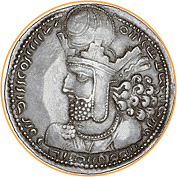I am keeping up with my senior students this semester. Posting weekly research and new work.
Cultural heritage is the legacy of physical artefacts and intangible attributes of a group or society that are inherited from past generations, maintained in the present and bestowed for the benefit of future generations.
Tangible heritage includes buildings and historic places, monuments, artifacts, etc., which are considered worthy of preservation for the future. These include objects significant to the archaeology, architecture, science or technology of a specific culture.
Objects are important to the study of human history because they provide a concrete basis for ideas, and can validate them. Their preservation demonstrates recognition of the necessity of the past and of the things that tell its story. Preserved objects also validate memories; and the actuality of the object, as opposed to a reproduction or surrogate, draws people in and gives them a literal way of touching the past. This unfortunately poses a danger as places and things are damaged by the hands of tourists, the light required to display them, and other risks of making an object known and available.
The reality of this risk reinforces the fact that all artifacts are in a constant state of chemical transformation, so that what is considered to be preserved is actually changing – it is never as it once was. Similarly changing is the value each generation may place on the past and on the artifacts that link it to the past.
Material Culture/Objects, Daniel Waugh, University of Washington
This essay explores ways to use material objects in the study of history. “Material objects” include items with physical substance. They are primarily shaped or produced by human action,  though objects created by nature can also play an important role in the history of human societies. For example, a coin is the product of human action. An animal horn is not, but it takes on meaning for humans if used as a drinking cup or a decorative or ritual object. Historical sources analyzed as text or images—for example, a legal charter on a piece of parchment or a religious painting—are also material objects, perhaps significant symbolically. The physical existence of a religious image in a dark cave as a “work of art” provides evidence of the piety of an artist or a sponsor. In some societies, before widespread literacy, the content of a legal document may have been less important than its existence as visible “proof” of a claim. Continue to read by going to this link.
though objects created by nature can also play an important role in the history of human societies. For example, a coin is the product of human action. An animal horn is not, but it takes on meaning for humans if used as a drinking cup or a decorative or ritual object. Historical sources analyzed as text or images—for example, a legal charter on a piece of parchment or a religious painting—are also material objects, perhaps significant symbolically. The physical existence of a religious image in a dark cave as a “work of art” provides evidence of the piety of an artist or a sponsor. In some societies, before widespread literacy, the content of a legal document may have been less important than its existence as visible “proof” of a claim. Continue to read by going to this link.
Looking at Artifacts, Thinking About History, Steven Lubar and Kathleen Kendrick
But they are also important to us as a way to approach the past. Museum Director Elaine Gurian suggests that artifacts provide us a way into history. "Objects, in their tangibility," she writes, "provide a variety of stakeholders with an opportunity to debate the meaning and control of their memories." Artifacts are the touchstones that bring memories and meanings to life. They make history real. Moreover, it is a reality that can and should be viewed from different perspectives. When museums choose not to enshrine and isolate an artifact but instead open it up to new interpretations and different points of view, they provide opportunities to challenge and enhance our understanding of the past. Look at the artifacts on this web site, and around you, as reminders of the complexity of the past. To fully appreciate the complexity of artifacts—and of history—we must not only acknowledge their multiple and conflicting meanings, but embrace them.
Above is an excerpt. Link to smithsoianeduction.org to read more.
Below
Stitching a new piece. Felt, ink and thread.


Below.
Finished the silk thread stitching on this piece inspired by maps. Felt, cotton and silk thread. Not sure what my next move is so will let this piece sit for a bit.























